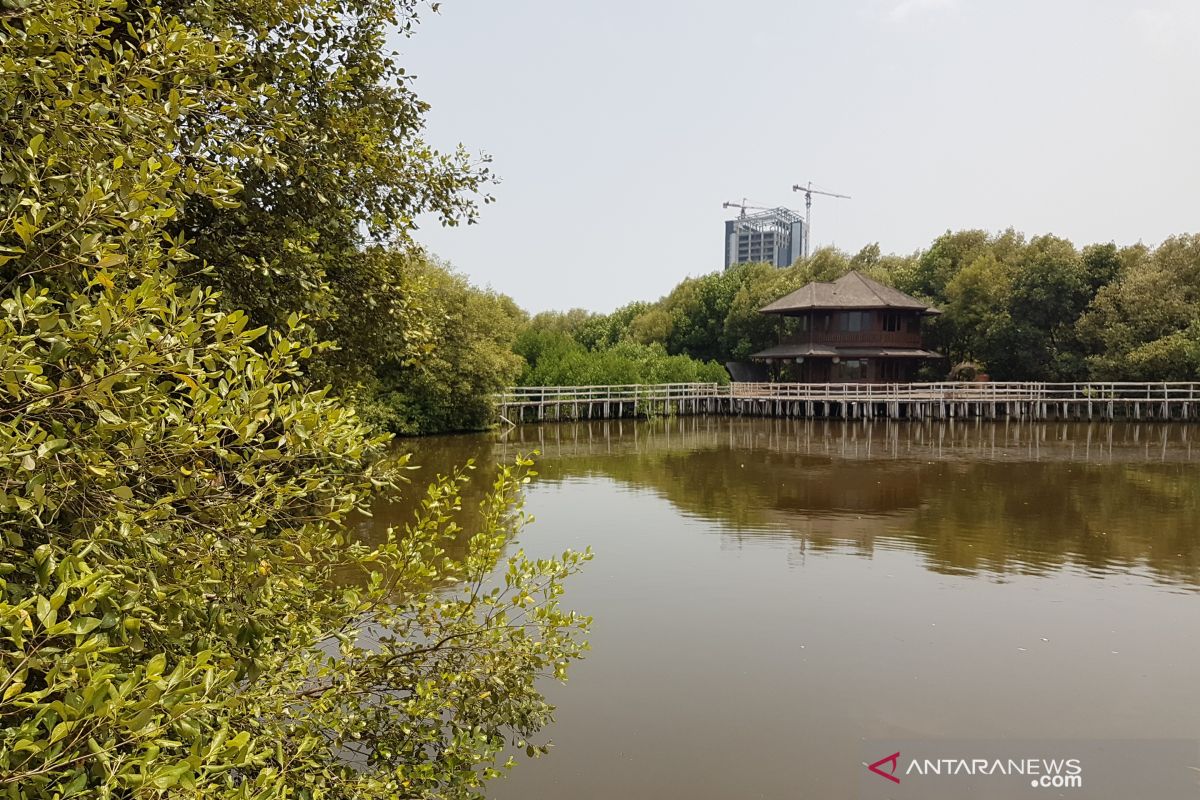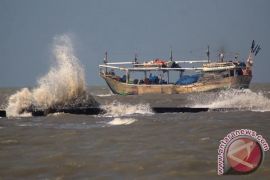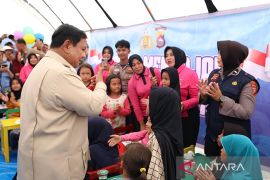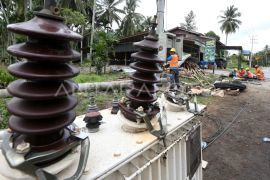Realization then dawns that in spite of the natural setting that we are eager to experience at the mangrove resort, in reality, this green and hidden place is still part of a modern, dense, noisy, and hot capital city of JakartaJakarta (ANTARA) - Jakarta is replete with attractions, ranging from shopping centers, museums, and amusement parks to cafes and bars and also sandy beaches and island hopping in the Seribu Islands.
However, few are aware of this capital city of Indonesia also having a mangrove resort available for tourism.
Located in Pantai Indah Kapuk (PIK), North Jakarta, the Angke Kapuk Nature Park has emerged as an alternative destination for people looking to soak in the wonders of Mother Nature and the verdant scenery in the midst of the density of urban existence.
To reach the mangrove resort, ANTARA took the Transjakarta 1A bus plying on the Balai Kota-PIK route followed by a halt at the PIK Avenue Bus Stop that is located in proximity to the Tzu Chi Foundation building.
This is the cheapest means of transportation from the city center by just paying Rp3,500. The time to travel from Balai Kota to the Tzu Chi building can reach almost two hours.
From the Tzu Chi building, after a mere 15-minute walk, one can reach the mangrove resort located behind the building. The heat won’t beat down upon the traveler, as the pedestrian area around the building is quite shady, with several trees planted.
Apart from public transportation, people can opt to use private cars or online-based transportation, basically whatever transportation is the most convenient and suitable for them.
After arriving at the mangrove resort, every visitor is required to pay Rp25 thousand for a ticket on weekdays and Rp30 thousand on weekends, while foreign tourists are charged Rp150 thousand and Rp170 thousand on weekends.
Not far from the entrance, ANTARA came across a recreation area with a canteen, mosque, outbound arena, and villas.

Strolling further, ANTARA headed to the bamboo bridge that cuts through the mangrove forest. On the left side are seen a line of triangular shaped buildings that are the villa rooms available on rent.
Walking further along the bamboo bridge, it is found to be connected to a bigger bridge, made of stronger wood, where the water and mangroves can be spotted.
Visitors are advised caution while crossing the bamboo bridge since some parts of the bamboo are already damaged and shifted.
Noon was not the ideal time for ANTARA to visit the resort, as the sun's heat was quite intense due to the longer dry season this year. Perhaps, the right time to visit this resort is in the morning or afternoon.
Since it is located not far from the main road and the busy area of PIK, from the bridge in the middle of the resort, ANTARA was able to spot high buildings towering even the Tzu Chi Foundation building.
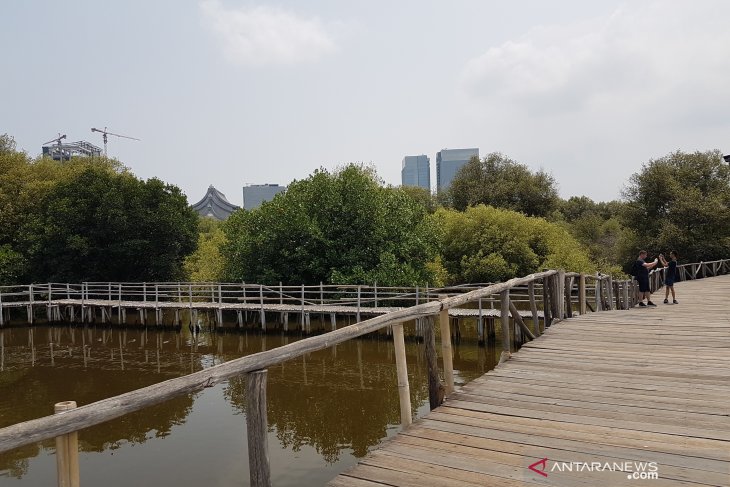
It comes as a stark contrast to see the green mangrove, with a backdrop of high-rise concrete buildings. Realization then dawns that in spite of the natural setting that we are eager to experience at the mangrove resort, in reality, this green and hidden place is still part of a modern, dense, noisy, and hot capital city of Jakarta.
However, more or less, the mangrove resort can be an option for locals or tourists keen on spending the year-end holidays around Jakarta. It is also quite picturesque for people interested in photography, or of course, capturing selfies.
The Angke Kapuk Nature Park began to be managed by late Hajah Murniwati Harahap through PT Murindra Karya Lestari since 1997 when during that time, 90 percent of the mangrove forest in this area was destroyed owing to human activities.
Managing an arid and uninteresting area as a tourist destination did not dampen Murniwati's enthusiasm to strive to maintain this area as its intended use.
In 2006, her company replanted mangrove trees and invited people concerned about preserving the Jakarta coastal area. Step by step, the area began to become lush again and several supporting facilities for nature tourism gradually began to be built.
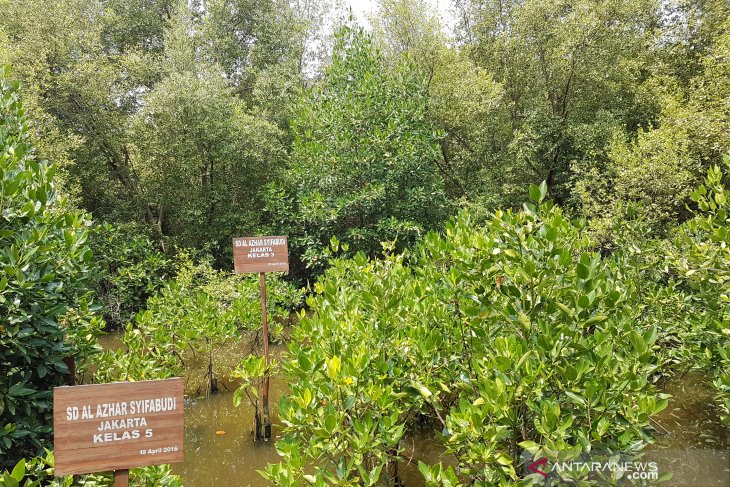
The 99.82-hectare mangrove park was inaugurated by then forestry minister Zulkifli Hasan on January 25, 2010.
Apart from tourism, this green paradise also serves as a mangrove conservation area on the coast of Jakarta. This area also brings back water birds and eagles, which are an indicator of health and complete life chain of wildlife in the area.
Unfortunately, during the visit to the mangrove resort, ANTARA does not spot the birds. However, akin to several other tourist destinations, plastic waste can easily be found at several locations of this resort, a strong reminder for the management of the resort and also for the visitors in such a natural place.
Related News: Bouncy, icy, sweaty: Guide to Jakarta's amusement spots
Related News: Tranquility in the hustle and bustle of Jakarta
Related News: Jakarta's nightlife: Speakeasy bars in southern district
Related News: Enthralling cultural experiences in vibrant Jakarta that never sleeps
Editor: Gusti Nur Cahya Aryani
Copyright © ANTARA 2019
